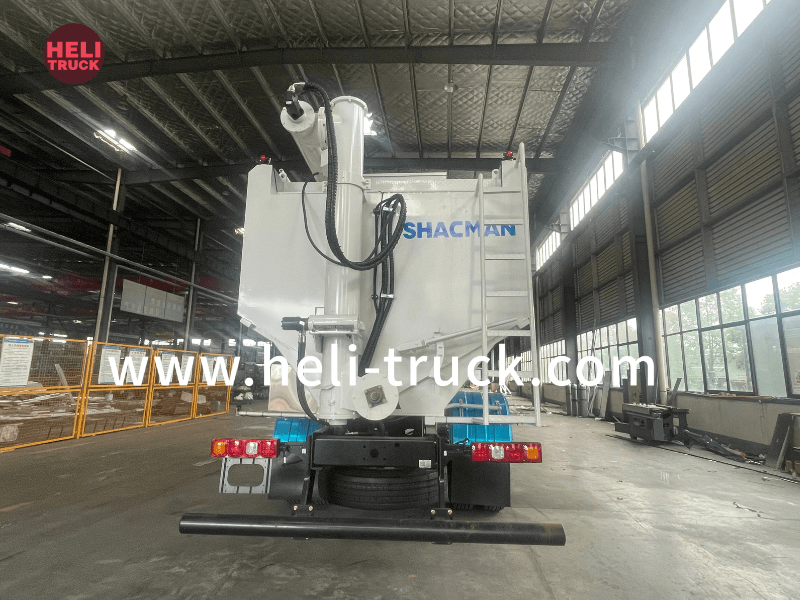Introduction
Garbage compactor trucks play a pivotal role in maintaining cleanliness and hygiene in our communities. These specialized vehicles are essential in collecting and compacting waste efficiently, contributing to a cleaner and safer environment for all residents. In this article, we will explore the various functions and benefits of garbage compactor trucks in community services, as well as the different types of compactor trucks available and their impact on waste management practices.
water tank truck of Garbage Compactor Trucks in Community Services
Garbage compactor trucks are a vital component of waste management systems in urban and rural areas alike. These vehicles are specifically designed to collect, compact, and transport solid waste from residential, commercial, and industrial areas to designated disposal sites. Without the efficient operation of garbage compactor trucks, waste collection and disposal would be a cumbersome and labor-intensive process, leading to environmental pollution and health hazards.
One of the key benefits of garbage compactor trucks is their ability to compact waste on-site, reducing the volume of collected waste and optimizing the use of available space in the truck. This not only increases the efficiency of waste collection but also minimizes the number of trips required to transport the waste to disposal sites, thereby reducing fuel consumption and greenhouse gas emissions.
Furthermore, garbage compactor trucks are equipped with advanced hydraulic systems that facilitate the compaction process, ensuring that the collected waste is tightly packed and secure during transportation. This helps to prevent littering and spillage along the collection route, maintaining the cleanliness of the surrounding areas and preventing the spread of diseases and pests.
Types of Garbage Compactor Trucks
There are several types of garbage compactor trucks available, each designed for specific waste collection and disposal requirements. The most common types of compactor trucks include rear loader compactor trucks, front loader compactor trucks, and side loader compactor trucks.
1. Rear Loader Compactor Trucks: Rear loader compactor trucks are the most widely used type of garbage compactor trucks in many communities. These trucks feature a hydraulic compactor mechanism at the rear of the vehicle, which compresses the collected waste into a compacted mass. Rear loader compactor trucks are suitable for collecting waste from residential areas, commercial establishments, and small businesses.
2. Front Loader Compactor Trucks: Front loader compactor trucks are equipped with a hydraulic lifting mechanism at the front of the vehicle, allowing them to pick up large waste containers or dumpsters. These trucks are commonly used for collecting waste from commercial and industrial sites, as well as large residential complexes. Front loader compactor trucks are efficient for handling bulky and heavy waste materials.
3. Side Loader Compactor Trucks: Side loader compactor trucks are designed with a hydraulic loading mechanism on the side of the vehicle, enabling them to collect waste from curbside bins or containers. These trucks are ideal for narrow streets and residential areas where access may be limited. Side loader compactor trucks are commonly used in residential neighborhoods and urban areas with restricted space for waste collection.
Benefits of Garbage Compactor Trucks in Community Services
The use of garbage compactor trucks in community services offers a wide range of benefits that contribute to the overall cleanliness and sustainability of our environment. Some of the key benefits of garbage compactor trucks include:
1. Efficient Waste Collection: Garbage compactor trucks streamline the process of waste collection by compacting and transporting waste in a single operation. This reduces the time and manpower required for waste collection, leading to cost savings and improved operational efficiency.
2. Minimized Environmental Impact: The compaction of waste in garbage compactor trucks reduces the volume of waste being transported to disposal sites, thereby minimizing the environmental impact of waste disposal. By reducing the number of trips required to transport waste, compactor trucks help to lower fuel consumption and greenhouse gas emissions.
3. Improved Public Health and Safety: Garbage compactor trucks play a crucial role in maintaining public health and safety by preventing the spread of diseases and pests associated with uncollected waste. The tight compaction of waste in compactor trucks minimizes littering and spillage, creating a cleaner and healthier environment for residents.
4. Enhanced Aesthetic Appeal: The use of garbage compactor trucks helps to improve the aesthetic appeal of communities by keeping streets, public spaces, and neighborhoods clean and free of waste. This contributes to a more pleasant living environment and enhances the quality of life for residents.
5. Sustainable Waste Management Practices: Garbage compactor trucks support sustainable waste management practices by efficiently collecting, compacting, and transporting waste to designated disposal sites. By optimizing the use of available resources and reducing waste generation, compactor trucks play a vital role in promoting environmental sustainability.
Conclusion

In conclusion, garbage compactor trucks are indispensable assets in community services, playing a crucial role in maintaining cleanliness, hygiene, and environmental sustainability. These specialized vehicles enable efficient waste collection, compaction, and transportation, contributing to a cleaner and safer environment for all residents. By understanding the importance and benefits of garbage compactor trucks in waste management practices, communities can implement effective strategies to manage waste effectively and promote a healthier and more sustainable living environment for future generations.
